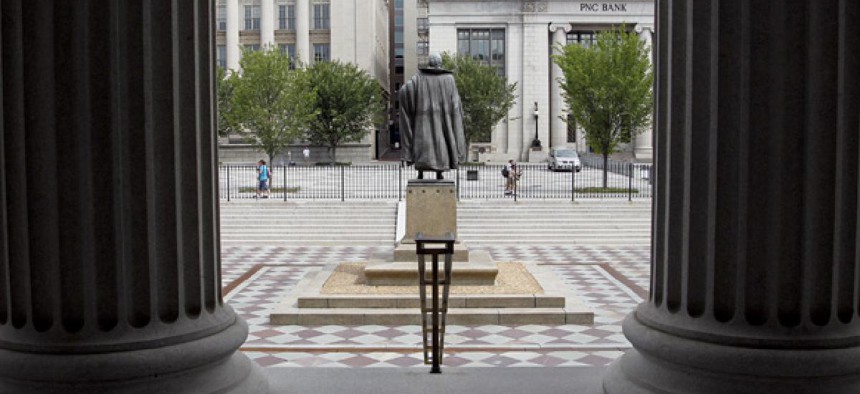
Pablo Martinez Monsivais/AP
White House seeks Treasury savings through streamlining
Proposed new fee on large financial firms would compensate Americans and discourage future risk taking.
The White House proposed saving money through improved efficiency at the Treasury Department in fiscal year 2013 as it introduced a new fee on large financial firms that would compensate Americans for their losses during the financial crisis and discourage future risk taking.
The administration requested $14 billion for Treasury, 2.7 percent less than the fiscal 2012 enacted level of funding but the same level the White House requested last year. But the budget would actually grow by 6.9 percent due to up returns on Internal Revenue Service investments, the budget said.
The administration continued its efforts to improve efficiency within the department. Last year, the White House planned to save $200 million through administrative streamlining and efficiencies such as going paperless. It estimated half that level of savings in fiscal 2013 through administrative efficiencies but introduced new means of streamlining: consolidation of the Bureau of Public Debt and the Financial Management Service and ceasing the overproduction of $1 coins to reduce the cost of producing pennies and nickels.
Treasury also would wind down its Troubled Asset Relief Program, reducing program costs from $40 billion in 2012 to $12 billion in 2013.
The Treasury Department would raise revenue through a $61 billion Financial Crisis Responsibility Fee, which requires the largest financial firms to compensate Americans for the “extraordinary assistance” the country provided to Wall Street. The administration hopes the new fee will discourage future risk-taking.






